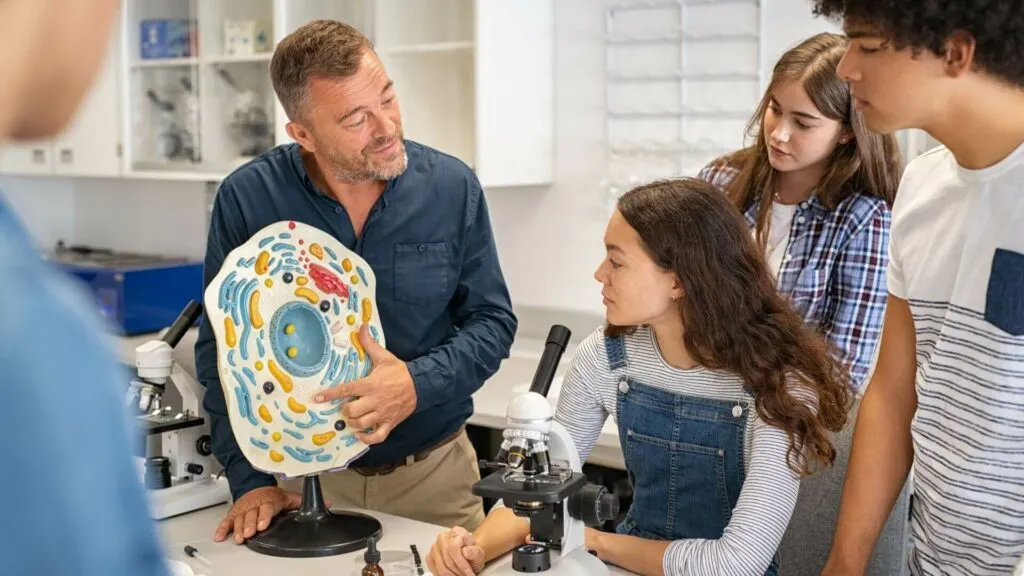Biology, the study of living organisms, encompasses a vast and intricate tapestry of life forms, evolutionary histories, and genetic relationships. Teaching such a complex subject requires tools that not only simplify these concepts but also engage students’ curiosity and understanding.
Among these tools, tree diagrams stand out as a particularly effective method for visualizing and exploring biological relationships. Using a tree diagram generator in the classroom is one of the most effective ways to simplify complex information, present it in a visual way, and make biology lessons more engaging and captivating. This article delves into the significance, application, and best practices of using tree diagrams in biology education.

The Significance of Tree Diagrams in Biology Education
Tree diagrams, also known as phylogenetic trees or cladograms in biology, serve as a visual representation of the evolutionary relationships among various species. They are structured similarly to a tree, with each branch representing a different species or group of species, and the points where branches converge, known as nodes, indicating common ancestors.
In educational settings, tree diagrams fulfill several critical roles:
- Illustrating Evolutionary Relationships: They visually demonstrate how species are interconnected through common ancestry, helping students grasp the concept of evolutionary biology.
- Facilitating Classification: These illustrations assist in understanding biological classification systems, like the Linnaean taxonomy, by visually grouping species based on shared characteristics.
- Explaining Speciation: These diagrams can illustrate the process of speciation, showing how new species evolve from a common ancestor, and thus highlighting the dynamic nature of life’s diversity.
- Genetic Comparisons: In genetics, these visuals are instrumental in comparing DNA sequences across different organisms, revealing genetic similarities and variations.
Effective Implementation of Tree Diagrams in Classroom Settings
To maximize the impact of these illustrations in biology education, educators should consider the following strategies:
- Interactive Learning: Interactive activities that involve constructing tree diagrams based on given data can significantly enhance students’ understanding and engagement.
- Real-World Case Studies: Incorporating case studies, like the evolution of Darwin’s finches, makes the learning process more concrete and relatable.
- Cross-Disciplinary Connections: Linking tree diagrams to other subjects, such as environmental science or geography, can broaden students’ understanding of the interconnectedness of various scientific fields.
- Technological Integration: Utilizing digital tools and software for creating and analyzing such diagrams introduces a modern and interactive element to biology education.

Addressing Challenges and Considerations
While tree diagrams are incredibly useful, educators must navigate certain challenges:
- Avoiding Oversimplification: It’s crucial to avoid oversimplifying complex evolutionary relationships to prevent misconceptions. At the same time, it’s better not to make your illustrations too complicated, so breaking up topics and presenting information gradually is key.
- Developing Interpretation Skills: Students often require guidance to interpret tree diagrams correctly, as they can initially appear counterintuitive.
- Keeping Up to Date: Biology is an evolving field, and phylogenetic relationships between organisms are frequently updated. Educators need to ensure that the diagrams used in teaching reflect the most current information.
Examples in Classroom Application
Incorporating specific examples and case studies in the curriculum can significantly enhance the effectiveness of tree diagrams in teaching. For instance, a lesson on the evolution of antibiotic resistance in bacteria can be made more engaging and informative by using a tree diagram to trace the genetic mutations and species diversification. Similarly, human evolution becomes more tangible when represented through a tree diagram, illustrating the common ancestry and divergent evolution of different hominid species.
Assessing Student Understanding
Evaluating students’ comprehension of tree diagrams is vital. Assessments can range from simple identification tasks, where students label different parts of a diagram, to more complex analytical exercises, such as interpreting the evolutionary implications represented by the diagram. Regular quizzes, group discussions, and project-based assignments can all serve as effective assessment tools.
Conclusion
Tree diagrams are an indispensable educational tool in the realm of biology. Their ability to visually represent complex evolutionary relationships and genetic information makes them a cornerstone in biology education.
When implemented thoughtfully, these diagrams not only enhance students’ understanding of biological concepts but also encourage a deeper appreciation for the diversity and interconnectedness of life. As biology education continues to evolve, the role of tree diagrams in the classroom is likely to grow, solidifying their status as a fundamental component in the toolkit of biology educators.

Jessi is the creative mind behind The Coffee Mom, a popular blog that combines parenting advice, travel tips, and a love for all things Disney. As a trusted Disney influencer and passionate storyteller, Jessi’s authentic insights and relatable content resonate with readers worldwide.
